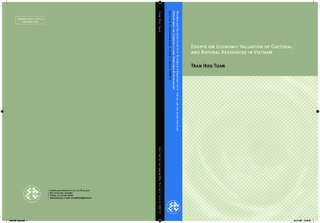| dc.description.abstract | The thesis consists of five self-contained papers. The first four papers are concerned with the economic valuation of cultural heritage sites, while the last one estimates direct use values of coastal wetlands in Vietnam.
In the first paper, contingent valuation is used to estimate the economic benefits of preserving the world cultural heritage site of My Son temples in Vietnam, and shows how these benefits can be captured and used to justify investments in preservation of this site.
The second paper compares and pools the estimates from contingent valuation and choice modeling of preservation of My Son. These two stated preference methods, independently and pooled, provide similar economic estimates. This convergent validity test shows that both methods can be used successfully to assess benefits to cultural heritage sites from measures to reduce air pollution, soil erosion, climate change and other causes of deterioration of cultural resources.
In the third paper, we compare the economic value of preserving historic temples in two countries in Southeast Asia, Thailand and Vietnam, and discuss the possibilities and difficulties in cross-country transfer of cultural heritage values.
The fourth paper estimates the errors due to yea-saying in dichotomous choice contingent valuation studies of cultural heritage, and investigates whether yea-saying is a bigger problem in developing countries than in developed countries where the majority of contingent valuation studies have been conducted.
As opposed to the application of stated preference methods applied in the previous four papers, the last paper shows how market prices can be used to estimate at least part of the total economic value of natural resources. Direct use values for competing uses of the Tam Giang- Cau Hai lagoon wetland in Vietnam, are estimated. The results suggests that the current activities of aquaculture, capture fisheries agricultural production and sea-grass collection provide higher economic benefits than extensive rice cultivation in all of the lagoon. | nb_NO |

